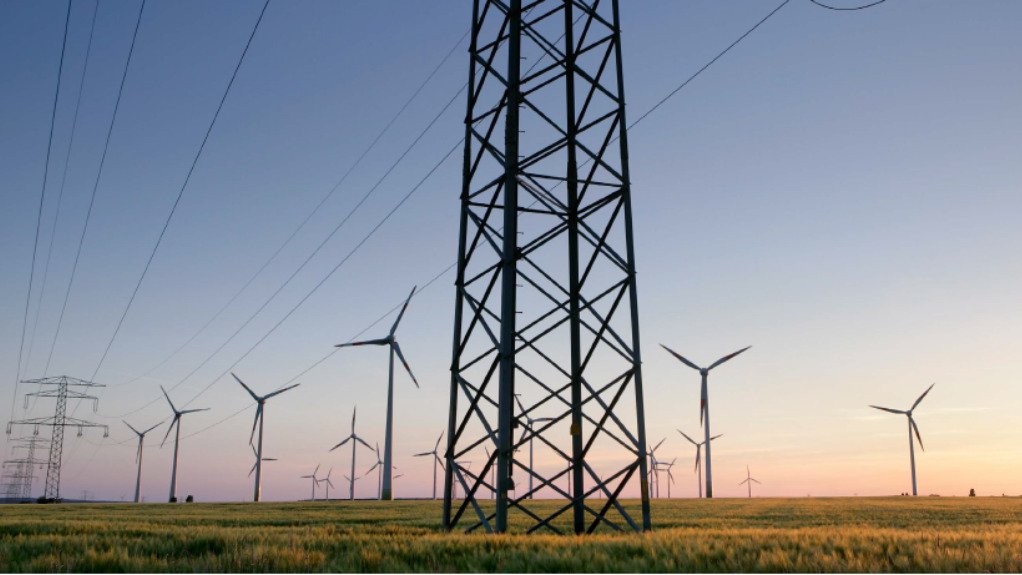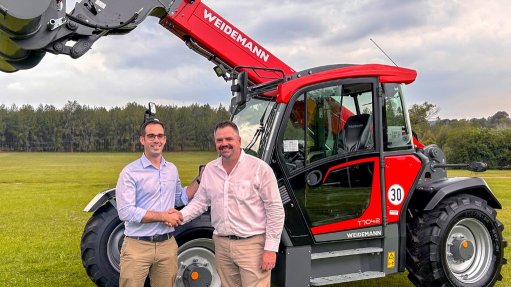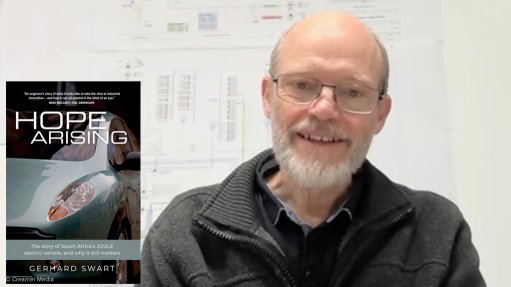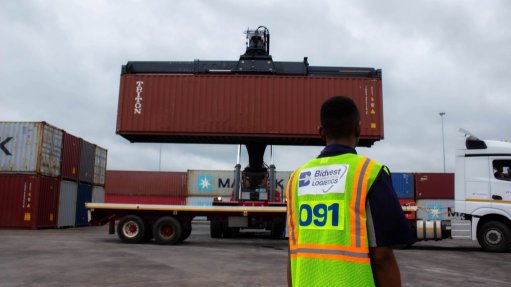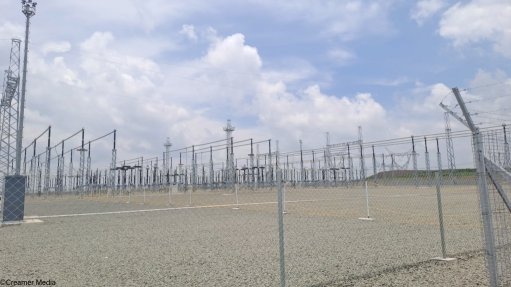Rising role of South Africa’s private offtaker market underscored in latest Global Wind Report
The growing role of the private offtaker market in stimulating the South African wind sector has been highlighted in the latest 'Global Wind Report', which has been released by the Global Wind Energy Council (GWEC).
In a section on South Africa, authored by the South African Wind Energy Association, the report notes that at least 15 private offtake projects totalling 1 943 MW have been announced following the market reforms of 2022 enabling renewables projects of any size to proceed without a licence.
These projects, the report states, are either under construction or will begin later this year.
“The first private offtake wind project to deliver power through the national grid was the 69 MW Msenge Emoyeni Wind Farm, completed in October 2024, which supplies power from the Eastern Cape to a petrochemical’s producer in the Free State.”
The report notes that most private offtakers are in the mining and petrochemical industries, which are contracting for renewable electricity as part of efforts to decarbonise their operations.
However, it also notes that several wind projects have signed agreements with traders and aggregators, signalling the arrival of the power trading market, as well as a geographical diversification outside of the traditional wind heartlands of the Eastern, Western and Northern Cape provinces, to include Mpumalanga.
“Mpumalanga has long been the heart of South Africa’s coal power generation, hosting the majority of Eskom’s coal-fired power stations.
“The construction of Ummbila Emoyeni, the province’s first wind farm, signals a significant shift towards renewable energy,” the report notes.
The move to the private offtake market had arisen as South Africa’s public procurement programme, which had dominated the initial phase of wind deployments, faced difficulties.
A total of 4 287 MW of wind energy had been procured under government’s Renewable Energy Independent Power Producer Procurement Programme (REIPPPP) since 2011, with 3 344 MW already operational.
However, the last successful bid window for wind was in 2021, when projects with a combined capacity of 1 608 MW advanced to the preferred bidder stage, and only 784 MW proceeded to construction, owing to Covid-linked supply-chain pressures and cost increases.
Subsequent bid windows for wind have failed, owing to insufficient grid capacity and a lack of clarity on curtailment rules, but the GWEC report states that the new Department of Electricity and Energy intends introducing reforms to restore the success of the public procurement model.
The project pipeline, the report notes, stands at 53 GW of wind and wind-hybrid projects, of which 33 GW could potentially be built by 2030, while the draft Integrated Resource Plan 2024 (IRP2024), which is currently still under consideration, indicates that between 69 GW and 76 GW of wind energy will be needed between 2031 and 2050.
However, grid connection capacity is held up as a major obstacle to accelerating wind energy deployments, with government proposing to supplement the build programme under way by the National Transmission Company South Africa with private independent transmission projects.
“In the short term, the wind energy industry awaits the revised IRP2024, which will provide direction for new electricity infrastructure over the next two decades and help restore investor confidence.
“The government is also planning to reform and restructure the REIPPPP to address current challenges, accelerate renewable energy procurement, and align with ongoing power sector reforms,” the report states.
TARIFF HEADWINDS
South Africa’s difficulties with auctions, grid capacity and supply chains are also key global themes in the 2025 report, despite record wind installations of 117 GW in 2024, raising total installed capacity globally to 1 136 GW.
GWEC is also still forecasting that another 138 GW will be installed this year, as well as a compound average growth rate of 8.8% to 2030, which would translate to another 981 GW of wind energy capacity across the globe by the end of the decade.
However, GWEC CEO Ben Backwell acknowledges that the “aggressive stoking of tariff wars” will bring further uncertainty and also threatens to disrupt the international supply chains on which the wind industry relies.
“Trade barriers and fragmentation presents an increasing risk to wind energy’s ability to accelerate growth through the efficiencies of a global, interconnected supply chain.
“The spread of protectionist policies, from tariffs to local content requirements, is gradually fragmenting the global trade regime with real consequences for the wind industry if trade-friendly industrial development policies are not followed,” Backwell states.
The report highlights the essential role of local industrialisation to the wind industry’s long-term competitiveness and profitability, but argues that localisation should be achieved without an over-reliance on market-disruptive measures.
Instead, GWEC argues in favour of an approached that seeks to leverage localisation through policies that focus on market predictability, skills development, regional cooperation and harnessing local industrial strengths.
The industry is also being affected by what GWEC describes a disinformation and misinformation, which is affecting the social acceptance of wind projects.
“The spread of false narratives about wind energy is exacerbating the persistent and multi-faceted issue of permitting bottlenecks, influencing policy decisions and eroding public trust in renewable energy solutions,” the report warns.
Article Enquiry
Email Article
Save Article
Feedback
To advertise email advertising@creamermedia.co.za or click here
Comments
Announcements
What's On
Subscribe to improve your user experience...
Option 1 (equivalent of R125 a month):
Receive a weekly copy of Creamer Media's Engineering News & Mining Weekly magazine
(print copy for those in South Africa and e-magazine for those outside of South Africa)
Receive daily email newsletters
Access to full search results
Access archive of magazine back copies
Access to Projects in Progress
Access to ONE Research Report of your choice in PDF format
Option 2 (equivalent of R375 a month):
All benefits from Option 1
PLUS
Access to Creamer Media's Research Channel Africa for ALL Research Reports, in PDF format, on various industrial and mining sectors
including Electricity; Water; Energy Transition; Hydrogen; Roads, Rail and Ports; Coal; Gold; Platinum; Battery Metals; etc.
Already a subscriber?
Forgotten your password?
Receive weekly copy of Creamer Media's Engineering News & Mining Weekly magazine (print copy for those in South Africa and e-magazine for those outside of South Africa)
➕
Recieve daily email newsletters
➕
Access to full search results
➕
Access archive of magazine back copies
➕
Access to Projects in Progress
➕
Access to ONE Research Report of your choice in PDF format
RESEARCH CHANNEL AFRICA
R4500 (equivalent of R375 a month)
SUBSCRIBEAll benefits from Option 1
➕
Access to Creamer Media's Research Channel Africa for ALL Research Reports on various industrial and mining sectors, in PDF format, including on:
Electricity
➕
Water
➕
Energy Transition
➕
Hydrogen
➕
Roads, Rail and Ports
➕
Coal
➕
Gold
➕
Platinum
➕
Battery Metals
➕
etc.
Receive all benefits from Option 1 or Option 2 delivered to numerous people at your company
➕
Multiple User names and Passwords for simultaneous log-ins
➕
Intranet integration access to all in your organisation



